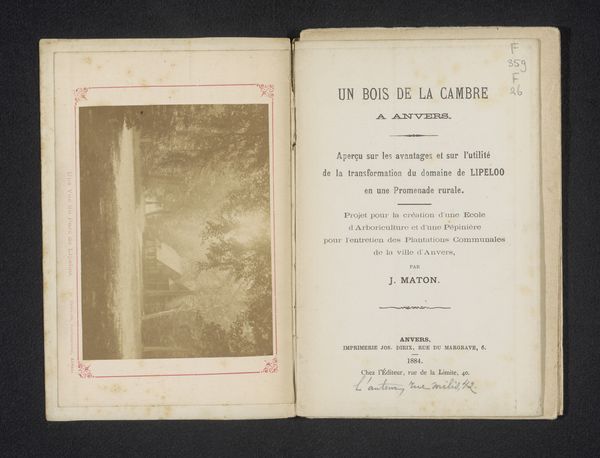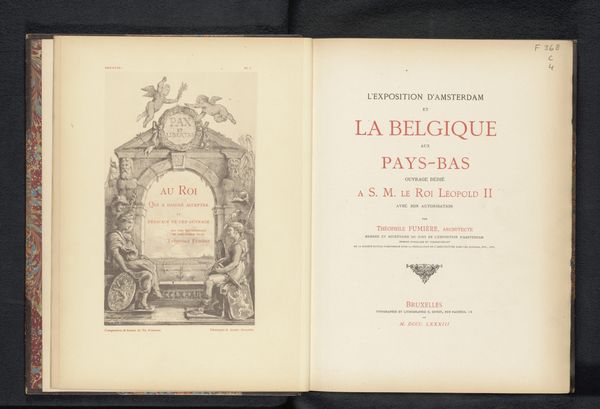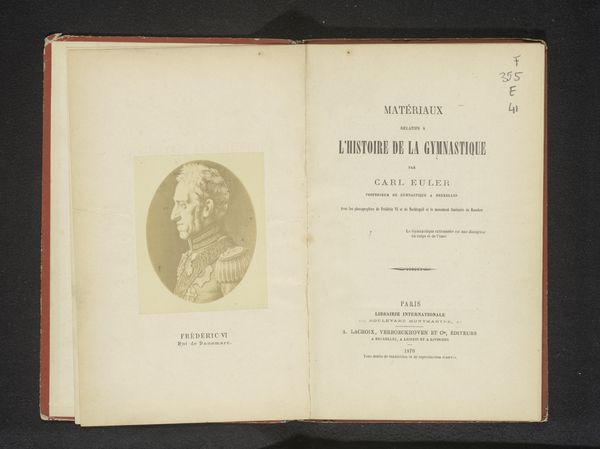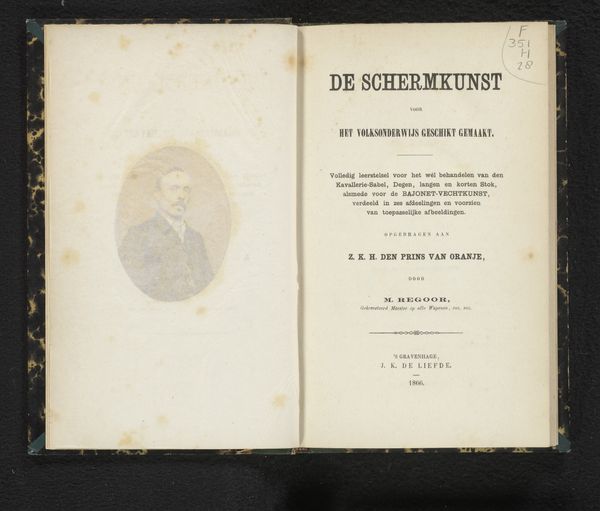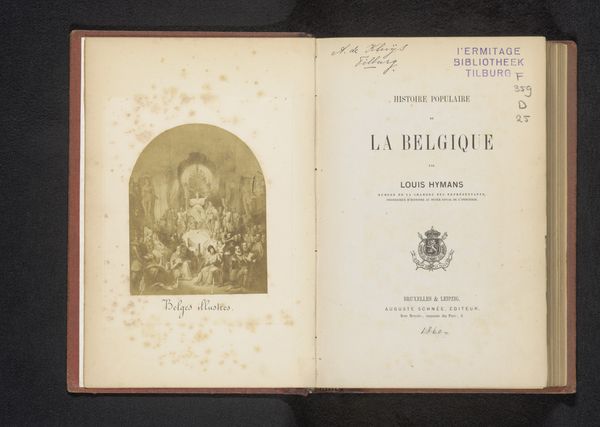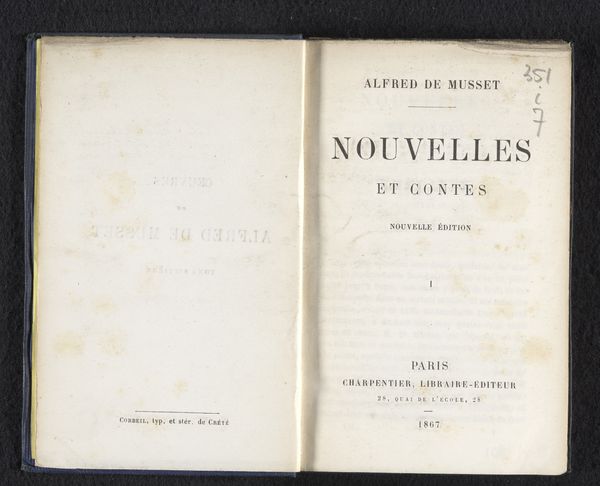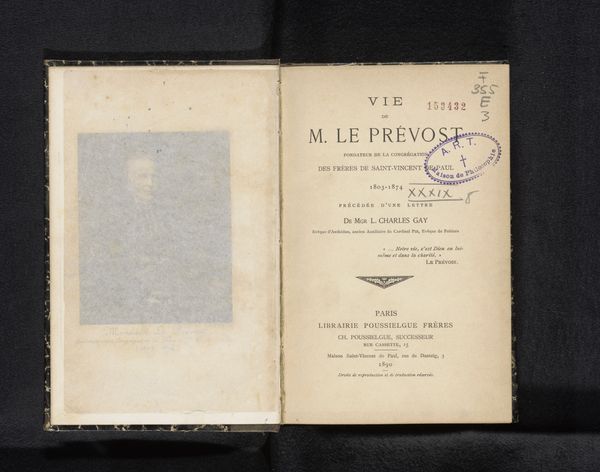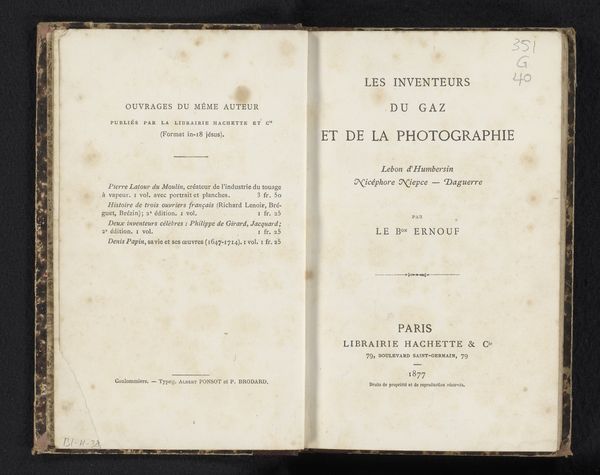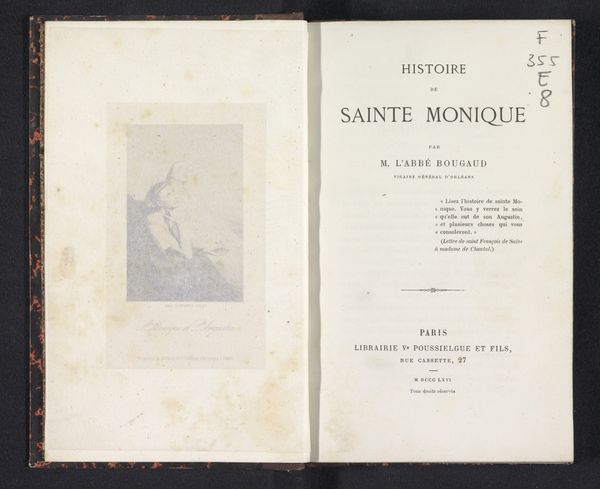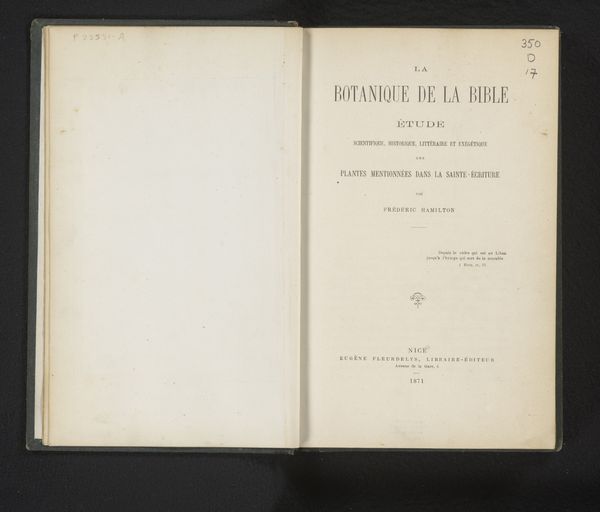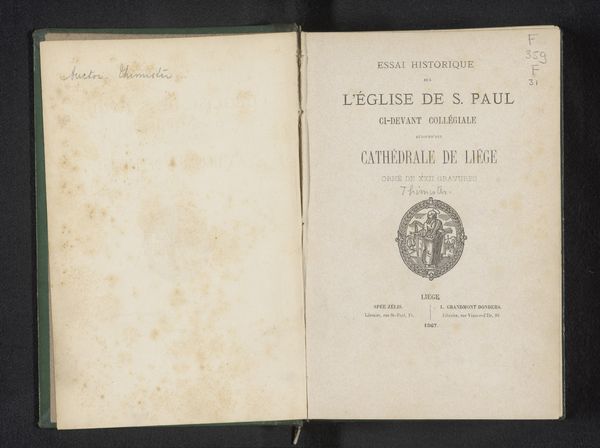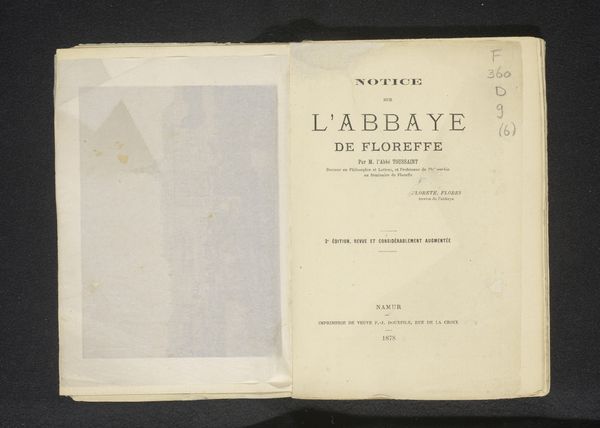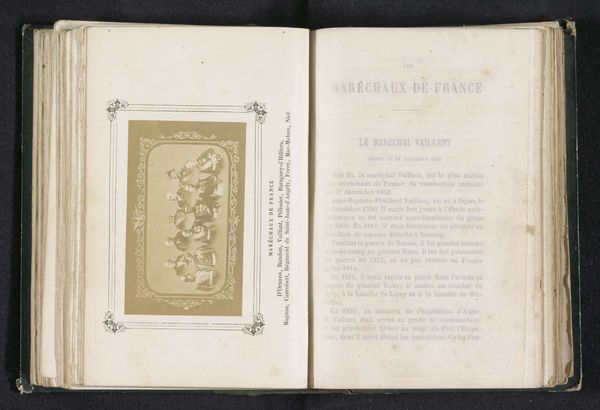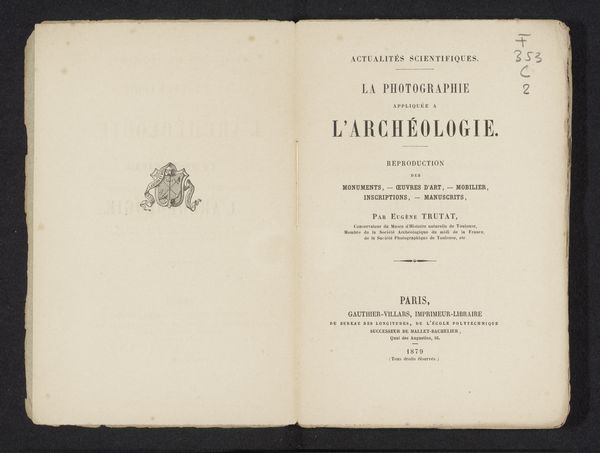
La Souabe après la paix de Bâle : recueil de documents diplomatiques et parlementaires, concernant les négociations avec la République Française, et la lutte des États de Wurtemberg contre Frédéric II, dernier Duc-Électeur (1795-1805) 1879
0:00
0:00
Dimensions: height 225 mm, width 144 mm, thickness 25 mm
Copyright: Rijks Museum: Open Domain
Curator: Looking at this print from 1879, "La Souabe après la paix de Bâle," what jumps out at you? It is a collection of diplomatic documents related to the French Republic, by the way, authored by G.G. Vreede. Editor: The stillness, the gravity of the subjects! There's something about those portraits nestled on the title page, the two men in them... they feel almost like ghosts peering out from a history book. Curator: Right? The way the portraits are placed alongside the text makes them seem almost integral to the narrative, like silent witnesses. Do you feel the Neo-Classical influence too, the formality, the structure of the page layout? Editor: Oh, absolutely, the font, the careful composition – it evokes that sense of order and reason so prized by the Neoclassical. But beneath that veneer, I sense tension. All those documents, the struggles of Wurtemberg... it speaks of a turbulent time masked by this elegant presentation. The cover creates this atmosphere that somehow these negotiations and treaties could be the path to avoid disaster or that they carry a great sense of tension beneath a calm facade. Curator: A sense of barely-contained chaos, precisely. Considering its symbols—this would include the crest at the bottom. These types of crests often reflect ideals or national identity during such historic moments, imbuing what can appear to be a simple image with multi-layered symbolism, such as ideas about nationhood and the complex web of political and historic struggles of the era. Editor: I see how that careful construction adds another layer, playing with the visual language of power and legacy. But it's more than just an academic study; it whispers secrets of ambition and resistance. It kind of begs the question to the observer about how the people looked and what happened during those discussions in halls and backrooms! Curator: Exactly! It bridges intellectual study with an almost novelistic flair, it offers intrigue. A silent echo in history, wouldn't you say? Editor: Couldn’t agree more. It’s those layers—the historical record intertwined with potent symbols, that keep you staring into the heart of it all.
Comments
No comments
Be the first to comment and join the conversation on the ultimate creative platform.
